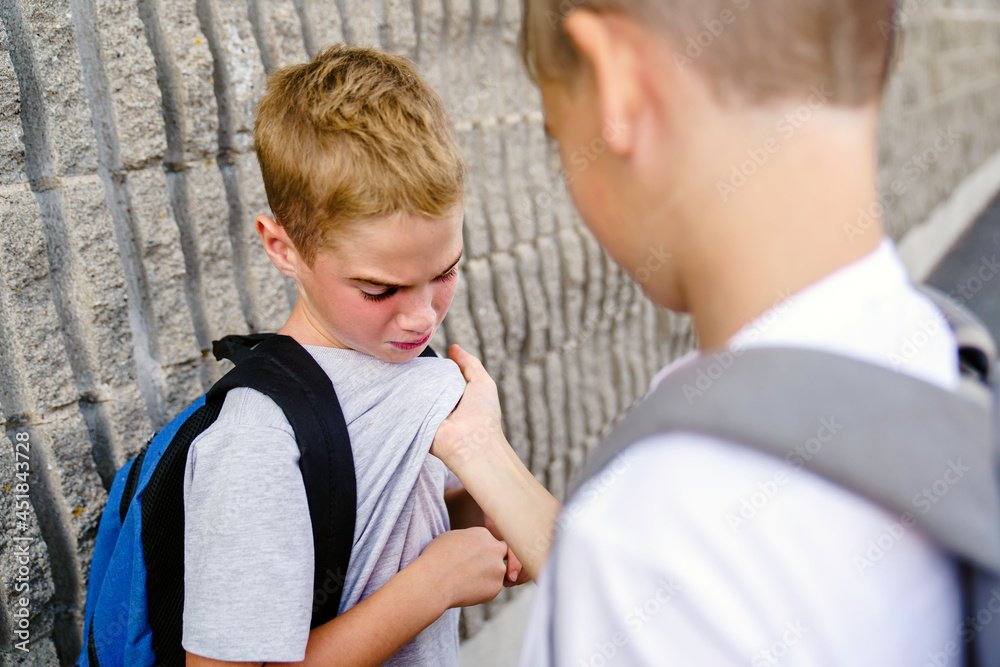Resources
Bullying, Cyberbullying, Self-Harm & Suicide
-

Bullying
Bullying is an aggressive behavior that involves an imbalance of power or strength. It is repeated over time and can take many forms.
-

Cyberbullying
Cyberbullying is willful and repeated bullying using digital communication or posting designed to hurt, threaten, embarrass, annoy, blackmail, or target another person.
-

Self Harm
Self-harm, or self-injury, is physically intentionally hurting oneself without suicidal intentions. It is a sign of emotional distress that should be taken seriously.
-

Suicide
Suicide is the reaction of extremely intense feelings of loneliness, worthlessness, hopelessness, or depression, which involves voluntarily taking one's own life
Statistics
Featured statistics for each category can be viewed below, or click the button for a PDF list of all available statistics.
Bullying
20% (1 out of every 5) middle and high school students report being bullied each year
(National Center for Education Statistics [NCES], 2019)
Youth who are bullied are at increased risk for depression, anxiety, sleep difficulties, lower academic achievement, and dropping out of school
(Centers for Disease Control [CDC], 2019)
Almost all forms of bullying peak in middle school, specifically 6th-grade students reported the highest percentage of bullying (29%)
Cyberbullying
Individuals who have experienced cyberbullying at some point in their lifetimes have more than doubled from 18% (in 2007) to 37% (in 2019)
Over 60% of students who experience cyberbullying reported that it immensely impacted their ability to learn and feel safe while at school
59% of U.S. teens have been bullied or harassed online, and over 90% believe it's a major problem for people their age
Sexting
Nearly 24% of teens (almost 1 in 4 middle and high school students) have been asked to send a sexually explicit image
14% of teens report sending texts with sexually explicit images to older students, and boys are more likely to participate
25 states have enacted legislation to address sexting as of 2018, with penalties ranging from educational programming for first-time offenders to fines, felony charges, or short-term incarceration
Approximately 1 in 5 children and youth in the U.S. experience a serious mental health concern associated with trauma, social isolation, and bullying, yet only 20% of them receive the help they need
Self-Harm
Targets of cyberbullying are at a greater risk than others of both self-harm and suicidal behaviors
Approximately 18% of youth report self-harming at least once
(Monto, McRee, & Deryck, 2018)
About 6% of students have digitally self-harmed or anonymously posted online or shared hurtful content about themselves
Suicide
Students who experienced bullying or cyberbullying are nearly two times more likely to attempt suicide
Suicide ideation and attempts among adolescents have nearly doubled since 2008
making suicide the 2nd leading cause of death for individuals 10-34 years of age
Approximately 1 in 20 adolescents experience suicide in a single year
Mental Health
Experience with bullying and cyberbullying are also associated with the development of low self-esteem, depression, anxiety, family problems, academic difficulties, delinquency,
school violence, and suicidal thoughts/attempts
Approximately 1 in 5 children and youth in the U.S. experience a serious mental health concern associated with trauma, social isolation, and bullying, yet only 20% of them receive the help they need
Bullied youth have a significantly higher risk of developing suicidality
Bullying & Cyberbullying Laws
Below you can view a list of the current bullying and cyberbullying legislation. You can also locate your state's bullying and cyberbullying laws at stopbullying.gov
State Anti-Bullying Legislation Overview
An overview of state anti-bullying legislation and other related laws by Sacco, Silbaugh, Casey, and Doherty (2012). Learn More
Mo Education Laws
Missouri Schools General Provisions Section 160.775: Every district shall adopt an anti-bullying policy by September 1, 2007. Learn More
Cyberbullying Laws
A regularly updated Laws, Policies & Regulations webpage by Stopbullying.gov provides a brief overview and link to each state's cyberbullying laws. Learn More
Sexting Laws
A regularly updated fact sheet by the Cyberbullying Research Center provides a brief overview and link to each state's sexting laws. Learn More
Immediate Crisis Hotlines
If you or someone you know is in suicidal crisis or emotional distress, call the National Suicide Prevention Lifeline at 9-8-8, a free 24-hour hotline. In the case of a life-threatening emergency, call 9-1-1 or visit your nearest emergency room. Below is an additional list of crisis resources.





